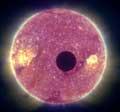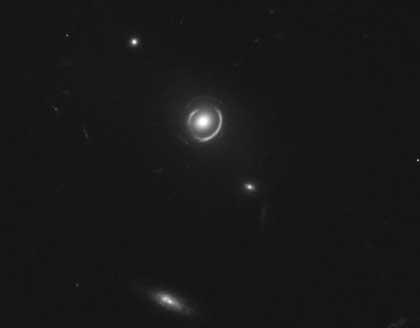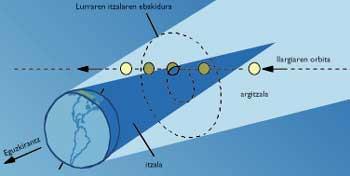Text written in Basque and translated automatically by
Elia without any subsequent editing.
SEE ORIGINAL
Eclipses Eclipses
2012/09/01
Roa Zubia, Guillermo - Elhuyar Zientzia
Iturria:
Elhuyar aldizkaria
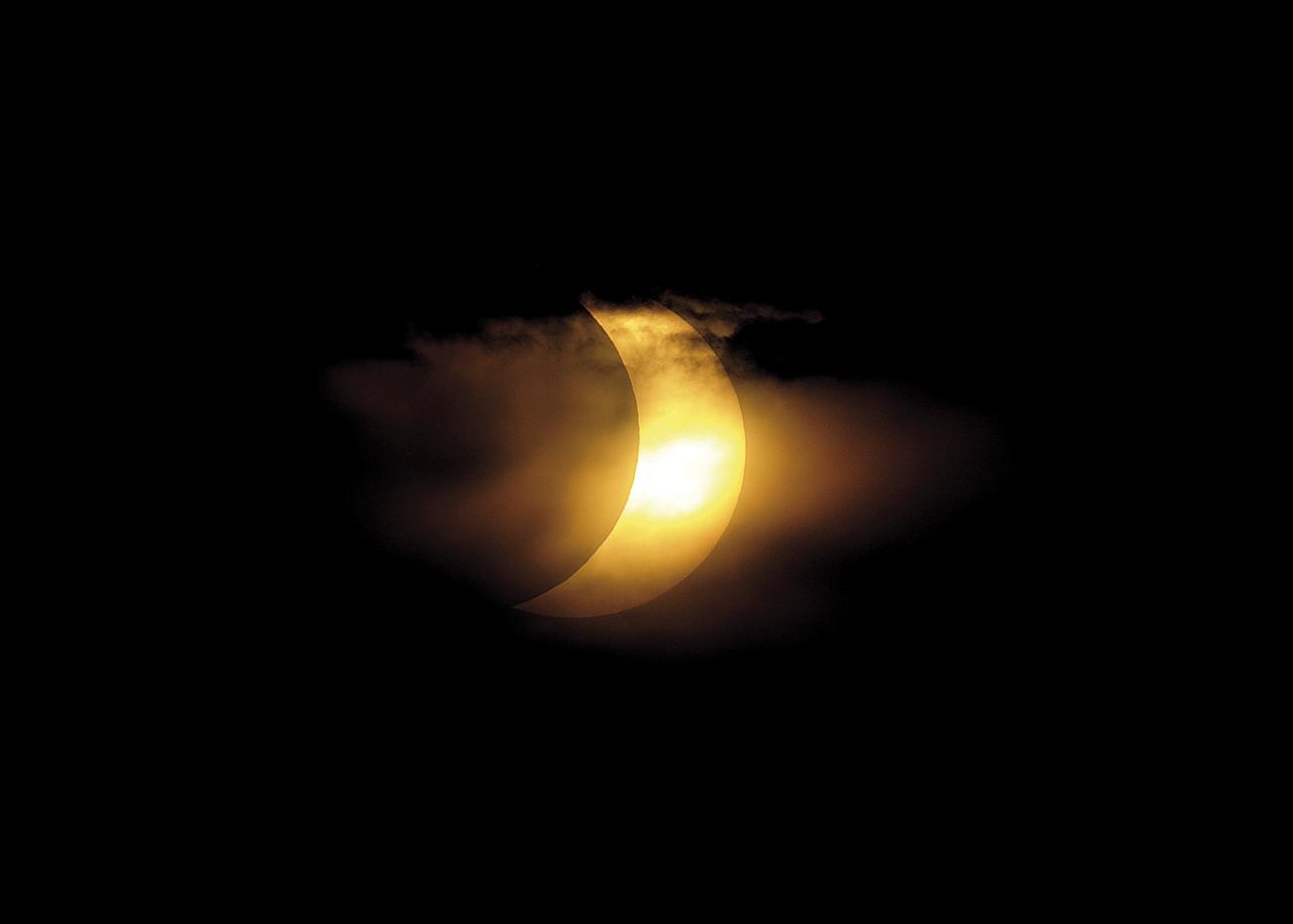
An eclipse of the Sun between the mists. July 22, 2009. Ed. Nara Simhan/CC By-NC-ND
From time to time, the Sun goes off for a few minutes in the middle of the day, until a simple ring of light stops in the sky. Other times the Sun disappears, but you can see its crown: the flames of matter in which the star is spacing. Both situations occur when the Moon is exactly on the Sun-Earth line, because the Moon itself has the perfect size for it. The shadow of the satellite is projected on Earth in a circle of 272 kilometers in diameter. If the Moon were smaller, or farther away, that shadow would not be shadow, but gloom, and in eclipses would never be overnight. If the Moon were greater, or closer, the ring of light or the crown of the Sun would not be seen. In addition, the Moon has no atmosphere, so in an eclipse of the Sun creates a defined shadow. In an eclipse caused by the Earth, the limit of the shadow of the Earth is very diffuse.
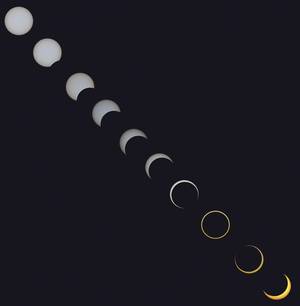
Annular eclipse of the Sun. May 20, 2012. Ed. Robert Adams/CC By-NC-ND
Eclipse Eclipse Eclipse Eclipse
Last but not least Last
It took place on 20 May 2012.
Next page Next page
November 13, 2012.
From Australia, New Zealand and the South Pacific.
Next in Europe
March 20, 2015.
A total eclipse can be seen from the North Atlantic, from Norway to the island of Svalbard. From Euskal Herria there will be a partial eclipse.
Next on the Iberian Peninsula
August 12, 2026.
It can be seen from the northwest peninsular and will be almost everything from Euskal Herria.
A clock in the sky
At the time when the legendary Nebuchadnezzar was king of Babylon, in the territory adjoining his kingdom there were two tribes in an intense war that the Sun and the Moon paralyzed. The war was between the Medes and the Lidies, a battle for the domination of Asia Minor, which lasted about five years. The day of the beginning of the war is not, of course, the day of completion itself. In a battle, midnight suddenly: it was a total eclipse of the Sun. The fighters stopped, signed peace, and that war was suspended forever. Thanks to the calculations of astronomers, historians know that. It was on May 28, 555. It is the first date of a battle known in history with the precision of the day.
Helium, element of the Sun
The French astronomer Pierre Jansen made a special measurement during an eclipse on August 18, 1868. In the spectrum of sunlight he found a line he had not seen until then. It was close to the lines that produce sodium, but it was not of sodium origin. Two months later, the English astronomer Joseph Norman Lockyer realized that it was a new element and thought that in the Sun it was, but on Earth it was not. That is why they called him helium. It was discovered later on Earth.







